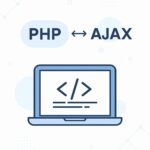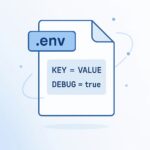Option 1: The Truly Free Route
- Start Local: Your personal computer is a perfectly capable server for development.
- Crawler: Write a web crawler (in Python, Go, Java, etc.) that starts from a few seed URLs. Limit its scope initially (e.g., “only crawl 1,000 pages” or “only crawl sites from this specific list”).
- Indexer: Build an inverted index in memory or save it to a simple file (like SQLite or even JSON). You don’t need a massive distributed database like Elasticsearch to start.
- Ranking: Implement and test algorithms like TF-IDF, PageRank (on a small graph), or BM25. This is pure math and logic—it doesn’t require a server.
- Use Free Cloud Credits (The “Hack”):
- Google Cloud Platform (GCP), AWS, and Microsoft Azure all offer very generous free tiers for new accounts.
- GCP: Offers a
e2-microVM instance free every month, indefinitely. It’s not powerful (1 vCPU, 1 GB RAM), but it’s more than enough to host a small crawler and test your ideas on a real, always-on server. - AWS: Offers a
t2.microort3.microinstance free for 12 months. - Azure: Offers a B1S VM free for 12 months.
- Strategy: Use these to deploy your code. You can run a small-scale crawl, see how your index performs, and learn about deployment. The key is to monitor your usage to ensure you stay within the free tier limits and don’t accidentally incur costs.
Option 2: The “Extremely Low Cost” Route (~$3.5 – $6/month)
When you outgrow the free micro instances, the next step is surprisingly affordable.
- Budget VPS Providers: These companies specialize in low-cost, reliable virtual servers.
- DigitalOcean: “Droplets” start at $4/month for 1 GB RAM. Their documentation and community are excellent for beginners.
- Linode: (Now part of Akamai) Similar plans, starting at $5/month. Also has a stellar reputation.
- Vultr: Offers similar starting prices. Often has a wider array of server locations.
- Hetzner: A European provider known for incredible value (e.g., a CX11 VPS with 2 vCPUs, 2 GB RAM for ~€4.51/month). Their availability can be limited outside Europe.
For a serious hobbyist, a $5/month VPS is a perfect starting point.
Option 3: The “Research & Academic” Route
If your project is truly non-commercial and research-oriented, you can ask for help.
- Apply for GitHub Student Developer Pack: If you are a student, this is your golden ticket. It includes hundreds of dollars in credits for DigitalOcean, AWS, Azure, and many other developer tools.
- Apply for Cloud Research Credits: Google and AWS have programs specifically for researchers and students working on innovative projects. They often grant substantial credits. Your project could qualify.
A Practical Plan for You
- Phase 1: Local Development (Cost: $0)
- Define a tiny scope. Example: “I will build a certain project within
developer.mozilla.org.” - Write a simple crawler (use libraries like
scrapyorbeautifulsoupin Python). - Build a simple index in a Python dictionary or a SQLite database.
- Implement a basic ranking algorithm (TF-IDF is a great start).
- Build a simple command-line interface to type a query and get results.
- Define a tiny scope. Example: “I will build a certain project within
- Phase 2: Micro-Cloud Deployment (Cost: $0)
- Sign up for the GCP Free Tier.
- Deploy your code to the free
e2-microinstance. - Let it run continuously, crawling your target site. Learn about process management (e.g., using
systemdorsupervisord).
- Phase 3: Scale Up (Cost: ~$5/month)
- Once you’ve proven your concept, migrate to a DigitalOcean or Linode $5 droplet.
- Expand your scope. Maybe crawl multiple developer documentation sites.
- Introduce more advanced tools: replace your custom index with Apache Solr or Elasticsearch (they can run on a 1GB RAM machine if tuned properly), use a proper database like PostgreSQL for storing page metadata.
- Phase 4: The Future
- If your hobby gets serious and you need to scale, you’ll have a solid foundation and can justify the cost of larger servers. You’ll also understand why you need them.
- InfinityFree: $0 cost, no ads, but all servers UK-based; sites suspended if idle or high-traffic
- DigitalOcean Droplets: entry price $4/mo, 99.99 % uptime SLA
- IONOS: promotional first-year total $12, renews at $12/mo; includes free domain + daily backups
- Wix free plan: 500 MB storage & 500 MB bandwidth, 99.9 % uptime
- GoDaddy Economy hosting: $5.99/mo (intro), includes free domain + email
Key Takeaway
Stop thinking you need a “decent VPS” to start. You don’t. You need a development environment. The free tier of a major cloud provider or your own laptop is more than sufficient to build and test the core algorithms of your work.
Start small, prove your concept, and scale up as needed. The journey from a simple local script to a distributed large scale project is the whole point of the hobby! Good luck!

